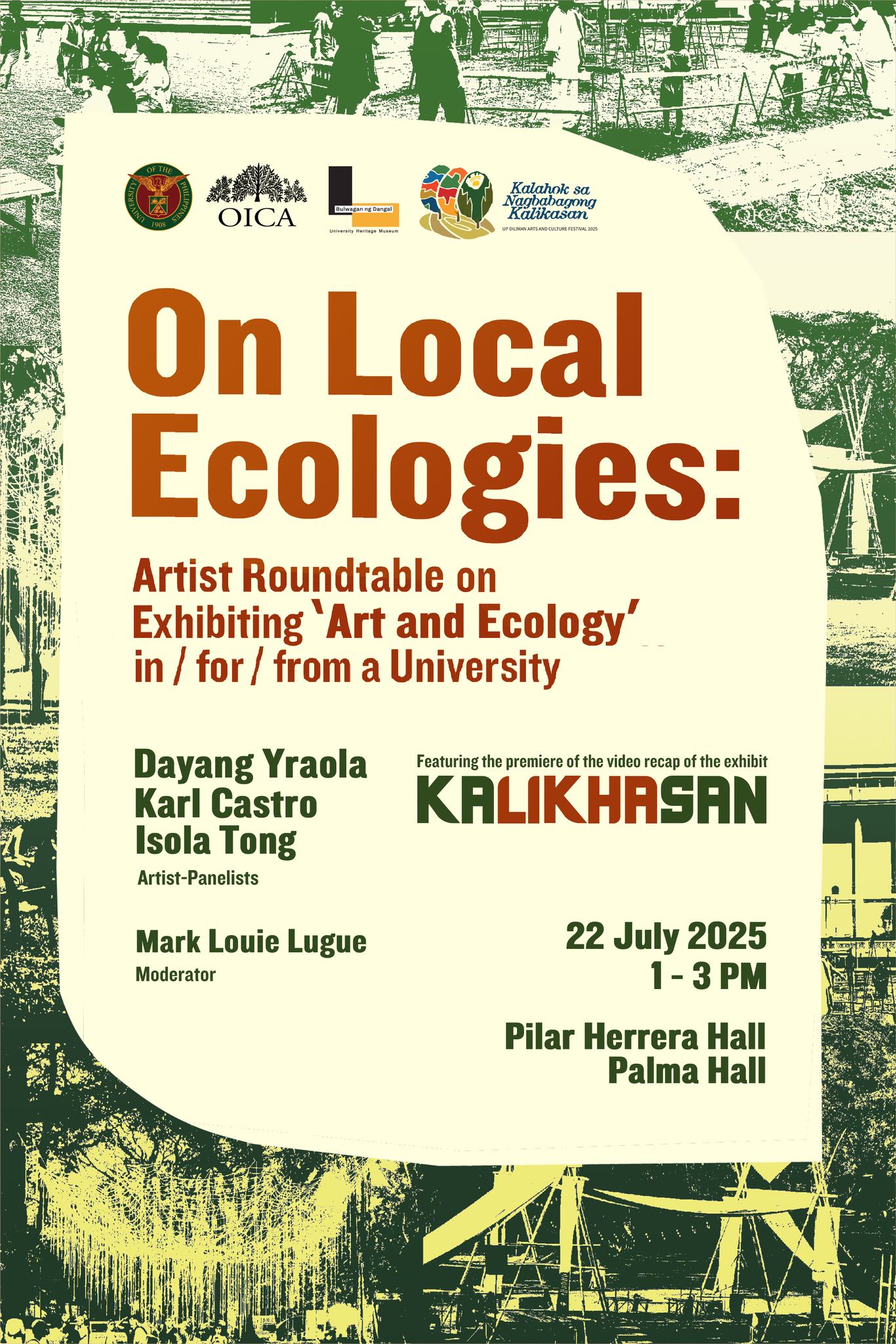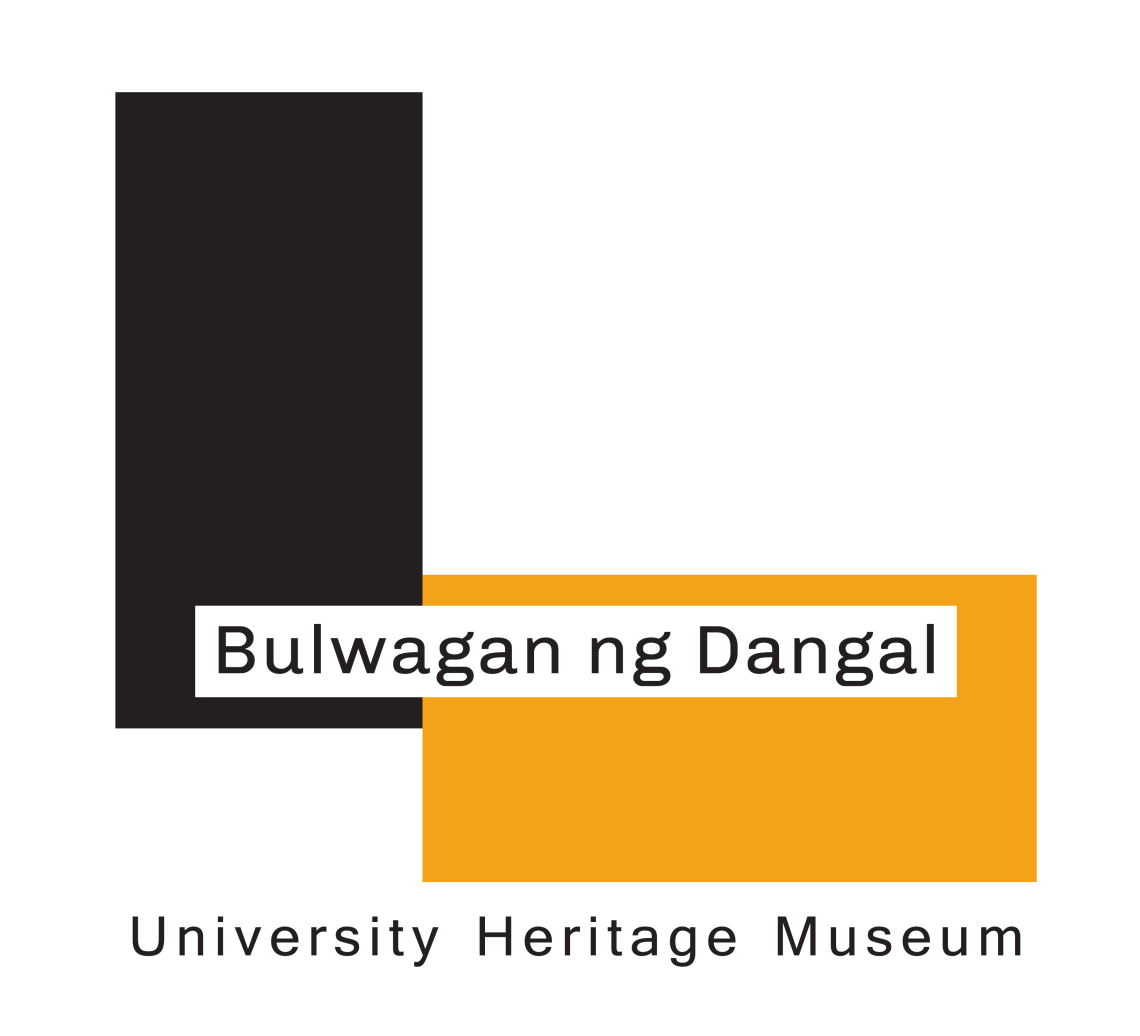
- This event has passed.
On Local Ecologies: Artist Roundtable on Exhibiting ‘Art and Ecology’ in / for / from a University

Samahan ang mga manlilikha ng mga instalasyong naging bahagi ng Kalikhasan na sina Dayang Yraola, Karl Castro, at Isola Tong sa isang makabuluhang diskusyon tungkol sa pagbuo ng eksibit na tumutugon sa mga isyung pang-kalikasan at ekolohikal sa ating Unibersidad. Makakasama rin natin si Kat. Prop. Mark Louie Lugue, ang co-curator ng Kalikhasan project, bilang tagapagpadaloy ng programa.
Roundtable Abstract:
In the country, earlier attempts at exhibiting art guided by ecological consciousness can be traced back to the 1970s, a period that witnessed a notable growth in environmentalism. Around half a century forward, more art exhibitions led and hosted locally have sought to tease out and underscore the ties between art and ecology. These tapped on the potential of art in surfacing the impact of humanity on the environment and in raising climate awareness. In the same vein, institutions and other groups began to examine or further reexamined their ways of working in response to the challenges of environmental sustainability.
This roundtable finds its position within this landscape by asking: What is added when we forward art as a proposition to ecological discourses through an exhibition situated in, for, and/or from a university? The University is a setting that is poised to offer a compelling perspective and starting point given its potential to be a progressive site of knowledge co-production despite inherent contradictions presented by the bureaucracies and conventions it tends to maintain as an institution. This potential rests in how the institution can flesh out and engender intergenerational exchanges and collaborations amongst its diverse disciplinal grounds and communities. More specifically, the session asks: What can the unique contours of the University of the Philippines Diliman—its institutional history, physical environment, communities, legacies, and present affairs—contribute to these ongoing conversations?
Drawing from the idea of “local ecologies,” the forum shall see the university as both a microcosm intrinsically linked with broader environmental systems, and a distinct ecosystem in its own right. Taking this as a frame for understanding the UPD community, the forum brings together artists Dayang Yraola, Karl Castro, and Isola Tong, who recently participated in the exhibition “Kalikhasan: Outdoor Art Projects on Campus Ecology” that ran from February to June this year. It offers an opportunity to reflect on the experience of conceiving and mounting outdoor and site-specific artworks that resonate with ecological discourses within and beyond the university, as they intersected with longstanding conversations on politics, class, and gender.
